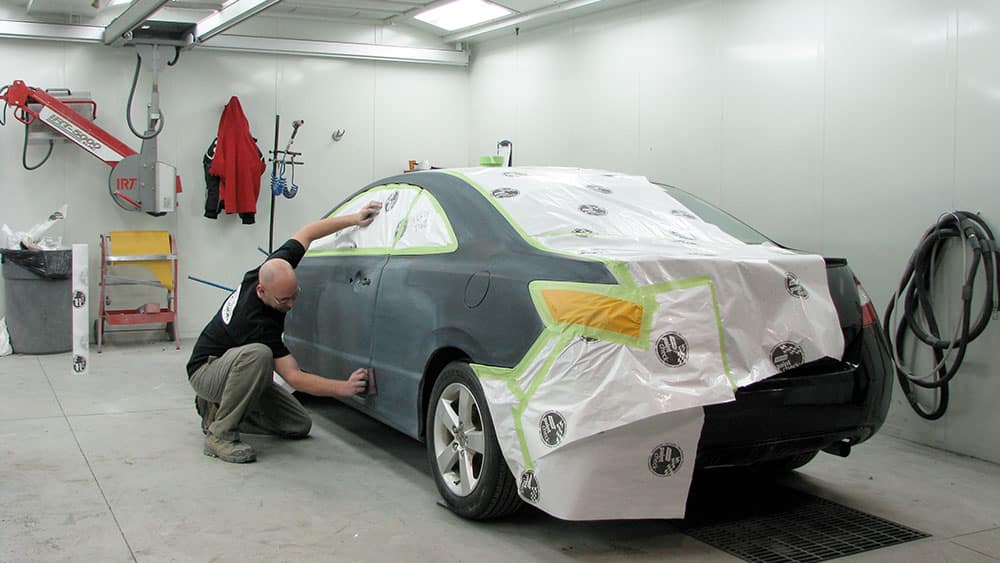
This first critical step in a satisfactory paint finish really starts with the condition of the part or surface to be coated and what steps were taken to prepare the surface for receiving a coating.
Has the part or surface been acclimated to the coating environment?
Apart brought in from a storage area, where there exists a difference in temperature from the coating material to be applied, may cause problems with adhesion or gloss and other surface defects.
Has the part or surface been properly cleaned, so as to be free of any oils from handling with bare hands, or other chemical contaminants from storage to process?
Many production facilities utilize compressed air to wash the part, or “blow off” the loose surface contaminants as a step in the preparation process. In addition, the part would typically be wiped clean with a suitable lint-free wipe and/ or tack cloth. Prepping the part for cleaning also requires an area, or location, that can have controlled clean air. Many facilities utilize Prep Stations, or Tack-off booths to accomplish this. Doing so also ensures a controlled environment where the dirt and debris from this process do not become potential sources of contamination elsewhere in the process.
Before the part can be coated, it will also require the removal of solid particulate that may remain on the surface. Wiping a surface clean is more than merely taking a handy rag and wiping it back and forth to get visible dirt and other particulates off of a surface. The prescribed method actually requires that all wiping is unidirectional from one side or end to the other. For instance, the decision on where to begin and end on an automotive part is usually from the most visible (class A surface) to the least visible (class B or C surface) aspect of that part. This would ensure any residual contaminant sources would be found on the least critical surface; should any remain. The requirement of wiping in one direction minimizes the probability of re-depositing contamination on to the surface.
 Another aspect of prep work that should be considered is the masking of parts in some coating applications. Ensuring that the masking material is also maintained in a clean room condition and that only virgin non-shedding material is used, eliminates a potential source of coating contamination.
Another aspect of prep work that should be considered is the masking of parts in some coating applications. Ensuring that the masking material is also maintained in a clean room condition and that only virgin non-shedding material is used, eliminates a potential source of coating contamination.Handling the parts, during and after the prep work, with lint-free gloves is a critical process requirement for many coating operations. Oils and particulate from human skin will contaminate the surface and create blemishes in the finish. We continuously shed small particles of skin and these can become airborne defects that can settle onto the surface throughout the process, so it’s always best to make sure that anyone inside the paint booth or prep area is dressed in appropriate attire.
One of the best ways to highlight your business is through a story that you can share across your online platforms. It humanizes your business and shows that your business can make a meaningful impact. Your testimonial would be used as a project profile on the GFS Booth Blog and can be shared on your website and/or social media channels.
Complete this form and we’ll be in touch to showcase your company.

Shop a variety of GFS aftermarket products, including booth protection products and mobile accelerated curing units. And enjoy the convenience of fast and free ground shipping throughout the contiguous United States.

Located at GFS’ headquarters in Osseo, Wisconsin, the Center for Excellence is an innovative facility featuring an automotive refinish training center, as well as a separate space dedicated to technical product training.

GFS is continuously searching for talented, ambitious individuals to join our team. We aim to provide our employees with every opportunity to make an impact on the company and find their niche along the way — weather in a production, field services or an office position.